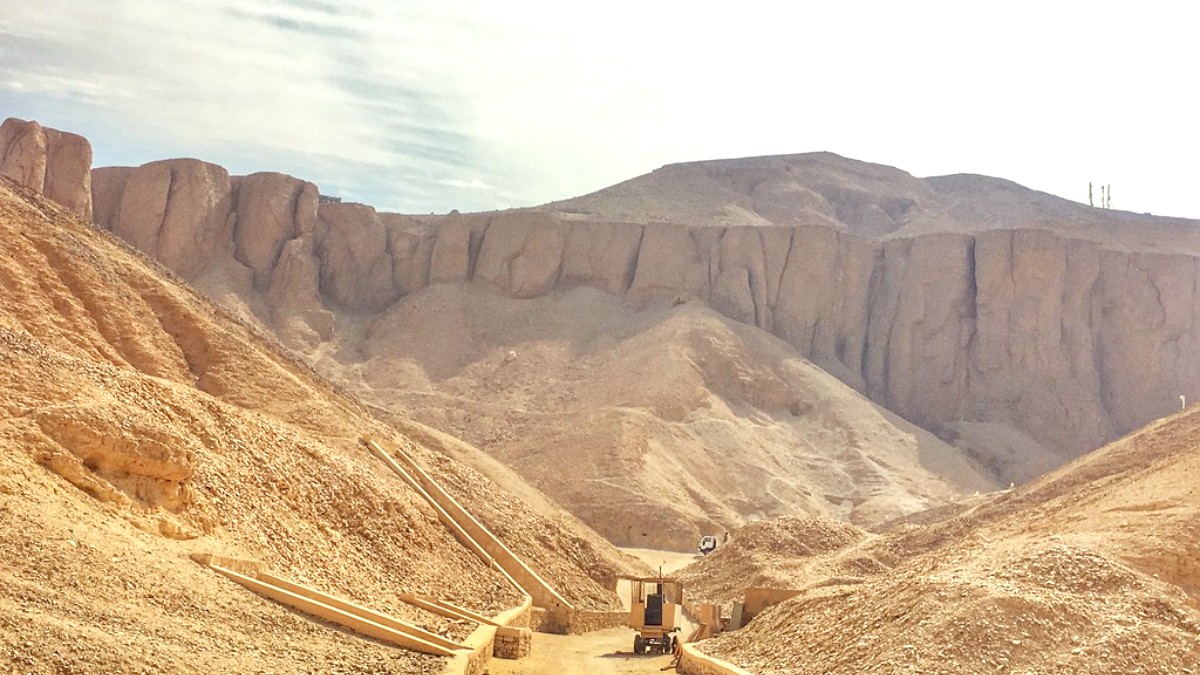
Luxor, Egypt
The region around Luxor presents a deep dive into ancient Egyptian civilization, with monumental sites spanning thousands of years.
The West Bank, where the Valley of the Kings is located, is a prime area of historical discovery.
Tickets for most attractions can be purchased on-site or through platforms like GetYourGuide.
These are burial sites of high officials and nobles, less crowded than royal tombs. These tombs exhibit unique art. Tickets typically cover clusters of 2-3 tombs.
This was the village of the workmen who built the royal tombs. It contains preserved houses and decorated tombs of the artisans, revealing insights into their daily lives.
An evening spectacle using lights, music, and narration to tell Karnak Temple's history. It delivers a different perspective on the ancient site.
The central natural feature. Felucca rides, motorboat trips, and cruises are popular ways to experience the river.
The West Bank is backed by the stark, beautiful cliffs of the Theban Necropolis. This desert environment forms a dramatic backdrop to the ancient sites.
A well-structured itinerary ensures you capture the grandeur of Luxor's ancient sites, specifically those around the Valley of the Kings.
Begin your day at the Valley of the Kings to avoid crowds and the midday heat.
Research which tombs are open and which appeal most. The general ticket allows access to three standard tombs.
After the Valley of the Kings, move to Hatshepsut's Temple, and then Medinet Habu, which are geographically close.
Wear comfortable shoes, a hat, and bring plenty of water, especially during warmer months.
Consider hiring a taxi for the day or arranging transport through your guesthouse for convenience on the West Bank.
Consider adding a visit to the Tombs of the Nobles or Deir el-Medina for a comprehensive experience of daily life and burial practices.
The royal necropolis for New Kingdom pharaohs. Plan for a half-day to explore a few tombs.
A unique terraced mortuary temple, carved into the cliffs. Allow 1-2 hours.
A well-preserved mortuary temple of Ramesses III with reliefs. Allocate 1-2 hours.
The East Bank offers equally important sites that round out your Luxor experience.
Certain tombs and sites within the Theban Necropolis require special, separate tickets beyond the general admission.
These often provide access to uniquely preserved or historically significant areas.
Tickets for these highly decorated or historically significant tombs are purchased separately at the Valley of the Kings ticket office.
While the Valley of the Queens has its own general admission, certain tombs within it also require an additional ticket for entry.
These collections of private tombs are spread across various areas and offer distinct insights into the lives of non-royal Egyptians.
This ancient village provides an unique look into the lives of the artisans and craftsmen who built the royal tombs.
Utilize these resources to plan your visits to Luxor's ancient sites, ensuring a smooth and comprehensive experience.
Purchase general admission tickets at the main ticket offices near each site. Special tomb tickets are separate.
Obtain maps at site entrances or consult online resources to navigate the extensive complexes.
Morning hours are best to avoid heat and crowds, especially at popular West Bank sites like the Valley of the Kings.
Hiring a local Egyptologist guide significantly deepens your appreciation of the sites, with detailed historical and cultural context.
Find Guides on GetYourGuideMany tour operators offer comprehensive Luxor and West Bank tours that include transportation and guided visits to sites.
Browse Tours on GetYourGuidePrivate tours offer flexibility and personalized attention, while group tours often represent a more budget-friendly option.
Compare Tour OptionsFor high season travel, booking tours and guides in advance secures your preferred options and availability.
Book Ahead on GetYourGuidePlatforms like GetYourGuide offer a wide selection of tours, activities, and pre-booked tickets for Luxor's attractions.
Visit GetYourGuideInformation regarding accessibility and available facilities at the sites.
The small shuttle train (taf-taf) transports visitors from the main entrance to the tomb area inside the Valley of the Kings. A small fee is usually collected on board.
Consider this option to save walking time under the sun.
Explore the local neighborhoods on both banks of the Nile to observe traditional Egyptian village life and architecture.
The West Bank of Luxor constitutes the vast Theban Necropolis, a city of the dead for pharaohs, nobles, and common people.
Each area tells a distinct part of ancient Egyptian funerary beliefs and daily existence.
This specialized museum offers a concise yet comprehensive look into the intricate process of mummification.
The museum highlights the religious and cultural significance of preserving the body for the afterlife.
The Luxor Museum, renowned for its art, is well-organized and displays artifacts beautifully, providing context to the sites.
This museum is a rewarding visit for those seeking a artistic and historical appreciation.
Wander through the local souks (markets) for an immersive experience of daily Egyptian life and commerce.
Visit workshops to see artisans creating traditional goods like alabaster carvings and papyrus art.
Observe the continuous flow of life along the Nile River from the Corniche or a felucca, a central element of Luxor's identity.